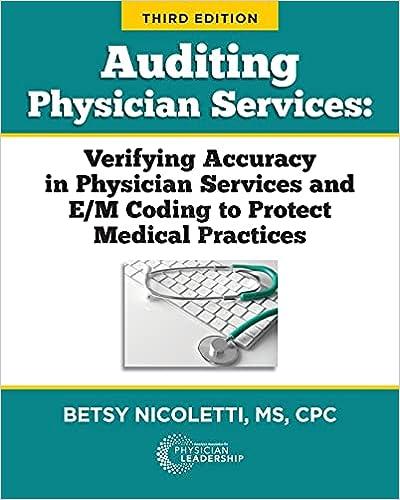Question
There have been complaints about Standard Costing. While standard costs are admittedly a budget per unit (which can be a good thing), the use of
There have been complaints about Standard Costing. While standard costs are admittedly a budget per unit (which can be a good thing), the use of standard costs generally do not promote reducing waste, increasing efficiencies, or overall continuous improvement (i.e. better, cheaper, faster). The following eight items have been identified as major sources of waste:
Defective products
Overproduction of goods not needed
Inventories of goods awaiting further processing or consumption
Unnecessary processing
Unnecessary movement of people
Unnecessary transport of goods
Waiting
The design of goods and services that do not meet the needs of the customer
"Lean Manufacturing strategies were developed to primarily focus on reducing waste. Good managers (such as yourself) realize that HOW the accounting information is presented will influence BEHAVIOR of employees. So as Lean Manufacturing progressed, there was recognition that how accounting was done and reported would likewise have to change. Accounting reports were needed that would ENCOURAGE LEAN BEHAVIORS BY MANAGERS AND EMPLOYEES. Consequently, lean accounting was developed.
We dont need to get into great detail on Lean Accounting in this class, but the basic concepts are worth your consideration FOR ANY TYPE OF ORGANIZATION WHERE YOU WORK BECAUSE MOST FIRMS HAVE WASTE. The quickest way to get a feel for the topic might be to click on the link to watch an approximately 8-minute video by Bill Waddell, a lean consultant who explains it well:
https://www.youtube.com/watch?v=X9GPxaakIvQ
Each Value Stream (which is a family of similar products) is evaluated like a separate business within the larger company. Accountants dont have to worry about allocating overhead to products because specific workers and facilities have been assigned to particular value streams and thus are directly traceable, which promotes more accurate product costing. The product cost is calculated by taking a Value Streams costs of the period and dividing by number of units made. This simplifies accounting considerably. For many people, the Lean Accounting Income Statement is easier to understand because they can see what is coming in (i.e. Sales) and what is going out (costs directly related to a particular value stream). Since items are not made until ordered, in lean manufacturing/accounting environments, managers are evaluated based on items SOLD, not on items PRODUCED. (And we already learned in this class the dangers of using traditional absorption costing to evaluate managers because under that system, managers would be encouraged to make too many items and that is generally NOT in the best interests of the company.)
REQUIRED: Explain why changes in value stream profitability may be better information than comparing individual product costs to standard costs for certain decisions. (I am looking for about a half-page typed up answer for this part of the assignment to show you understand these concepts.
Step by Step Solution
There are 3 Steps involved in it
Step: 1

Get Instant Access to Expert-Tailored Solutions
See step-by-step solutions with expert insights and AI powered tools for academic success
Step: 2

Step: 3

Ace Your Homework with AI
Get the answers you need in no time with our AI-driven, step-by-step assistance
Get Started


